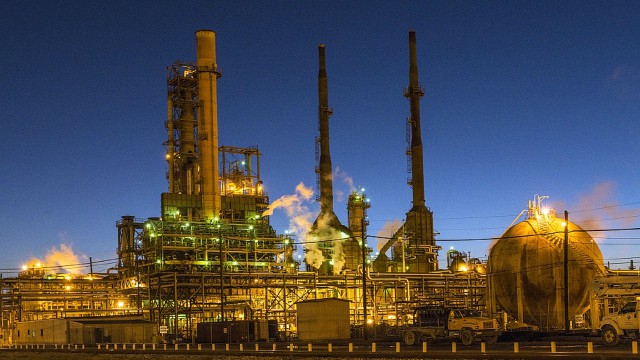Something interesting has been happening with many of Canada’s medium-sized oil producers over the last few months, yet seemingly nobody has noticed.
Although the price of oil has stubbornly stayed between $52 and $54 per barrel — a barrel of oil trades hands at $53.20 as I write this — energy producer shares are falling. Declines of 20% or even 30% are surprisingly common.
Let’s look at Baytex Energy Corp. (TSX:BTE)(NYSE:BTE) as an example. Baytex shares closed at $7.16 on December 13. They’ve since fallen to $5.03 — a decline of 29.8% in a little less than three months. That decline is despite crude oil staying relatively flat.
Baytex’s share price has closely followed the price of crude for months now. Why has that changed? Let’s take a closer look.
All about expectations
The simple explanation may very well be the most correct one. Baytex shares are falling because the outlook for oil is also weakening.
The easiest way to confirm this is to look at the crude oil futures market. If I wanted to buy a barrel of oil for delivery at the end of 2019, I’d pay $53.96 a barrel, which is barely 1% higher than today’s price.
In other words, the market is saying today’s oil glut is going to last a long time. That’s despite OPEC’s production cuts and very little growth in Canada’s energy sector.
Compare that to a year or even six months ago. Sure, the common refrain went, “oil is down, but it will come back.” There was a feeling of optimism. Those feelings have now gone away.
There are two ways an investor can look at this. They can either conclude the market is right, which makes it pretty easy to avoid oil stocks. Or they can take the contrarian view and bet on oil heading higher.
One thing is certain: if oil heads higher, Baytex will benefit in a very big way.
Why Baytex?
Baytex has done a nice job reining in costs. Operating expenses per barrel fell 23% in 2016, and transportation costs fell 37%.
Its breakeven costs have dropped to $30 per barrel in the Eagle Ford formation in Texas, which accounts for half of its production. The same costs have fallen to $41 per barrel in northern Alberta, which is responsible for the other half of production.
Baytex plans to produce between 66,000 and 70,000 barrels of oil per day in 2017 and will generate free cash flow above its $300-350 million capital budget if crude can average above $55 per barrel. If crude averages $65 per barrel, free cash flow will approach $150 million.
The company’s debt is a concern. It currently owes $1.82 billion to creditors; that’s a lot for a company with a market cap of $1.11 billion. But only $9 million of that debt is due before 2021, giving Baytex plenty of time to ride through this storm. The company isn’t close to breaching debt covenants, either. It also has more than $500 million in unused credit available to tap if needed.
Baytex recently spent $65 million to add 3,000 barrels of oil in daily production, which shows it still has the flexibility to make acquisitions.
And finally, we can’t forget about Baytex’s recent history. In the first half of 2015, when crude last traded above $60 per barrel, Baytex shares traded hands for more than $20 each. There’s no guarantee that will happen again, of course, but it just goes to show how much potential upside there could be if crude improves just 10% from today’s levels.
The bottom line
Baytex is well positioned to really take off when oil heads higher. Much of its share price really does come down to sentiment.
In a world where value stocks are hard to find, Baytex is a truly cheap energy producer with huge upside if the price of oil cooperates. There aren’t many stocks with that kind of risk/reward ratio today.







